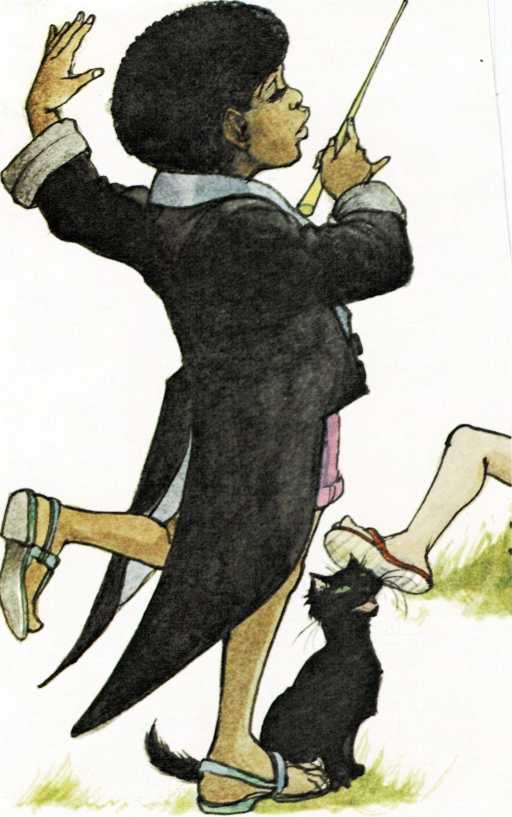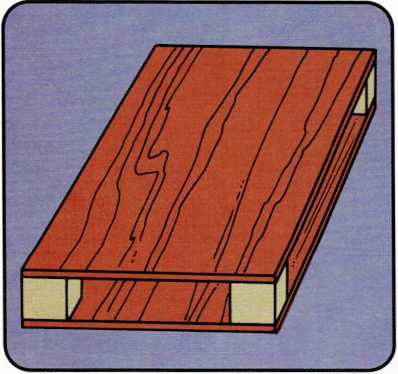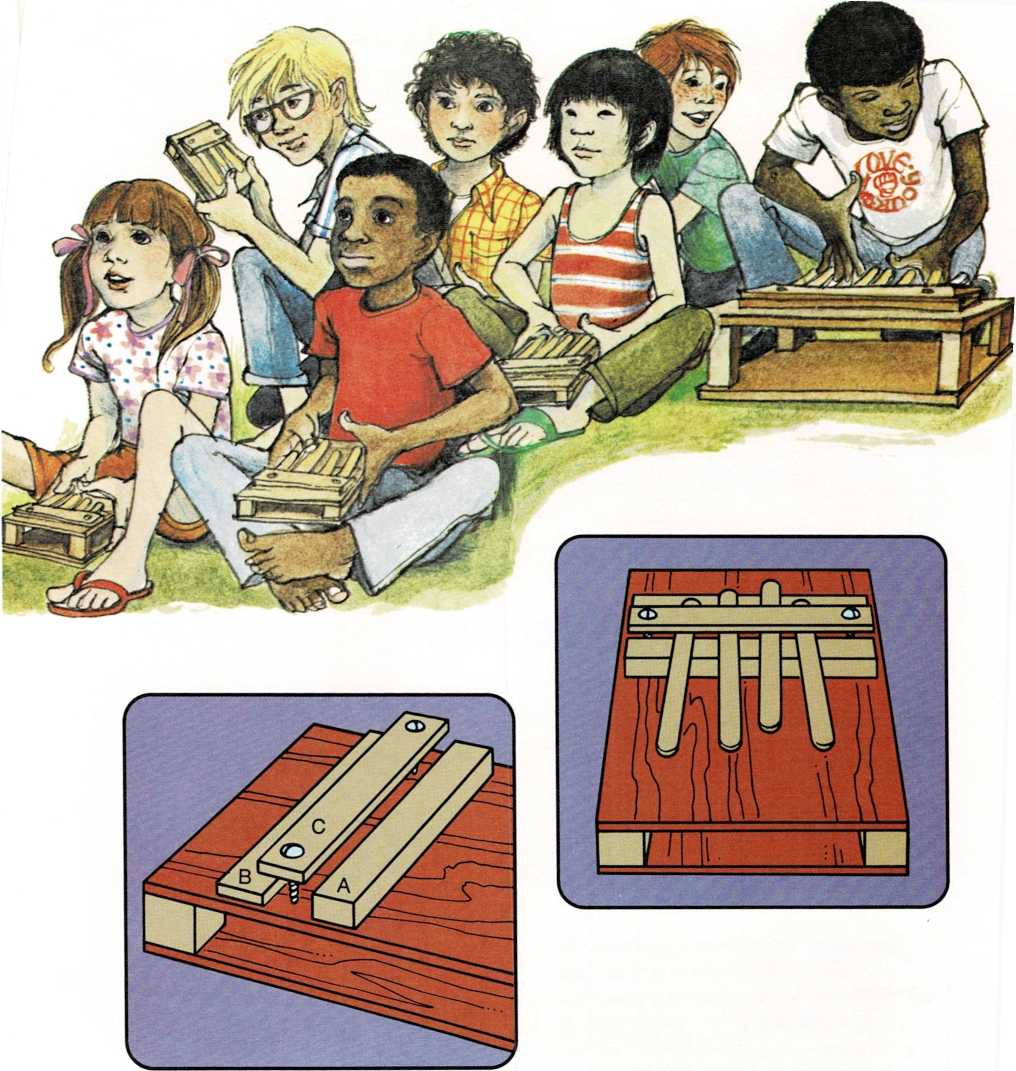African thumb piano
Materials
crosscut saw
glue (white)
hand drill with twist drill bit
ice-cream sticks (four)
lumber (\^ inch plywood, scrap blocks, and thin strips)
pencil
ruler
sandpaper
screwdriver
screws, roundhead (two)
For the top and bottom of the piano, cut out two rectangles from
the plywood (see sawing, page 202). Each piece should be about 6
inches (15 cm) wide and 8 inches (20 cm) long. Sand the sides and
edges of both pieces (see sanding, page 203).Cut four blocks. Each block should be about 1 inch (2.5 cm) thick
and 1 inch (2.5 cm) long on each side.
Sand the blocks. Then glue them between the top and bottom pieces. Put
a brick or heavy book on the top piece. Let the glue dry.
- Cut three crossbars (A, B, and C), each about inch (12 mm) wide
and 6 inches (15 cm) long. One crossbar should be a little thicker
than the others. Sand the crossbars.


Glue crossbars A and B to the top of the piano, about \| inch (2 cm)
apart. Use the thick crossbar for crossbar A.

Drill a hole about \| inch (12 mm) from each end of crossbar C (see
drilling, page 201).Screw crossbar C to the piano top between crossbars A and B (see
driving screws, page 201). Use roundhead screws that will not go
all the way through the piano top. Do not tighten the screws yet.
6 Slide four ice-cream sticks under crossbar C. Position the
sticks on crossbars A and B so the ends resting on crossbar A are
different lengths. This will make each one sound different. Tighten
the screws to hold the sticks in place.
To play your African thumb piano, hold the piano in both hands. Snap the
ice-cream sticks with your thumbs until you create a rhythm you like.
Most African music is played on drums, but stringed instruments and
woodwinds are also used to make pleasing sounds and rhythms.

